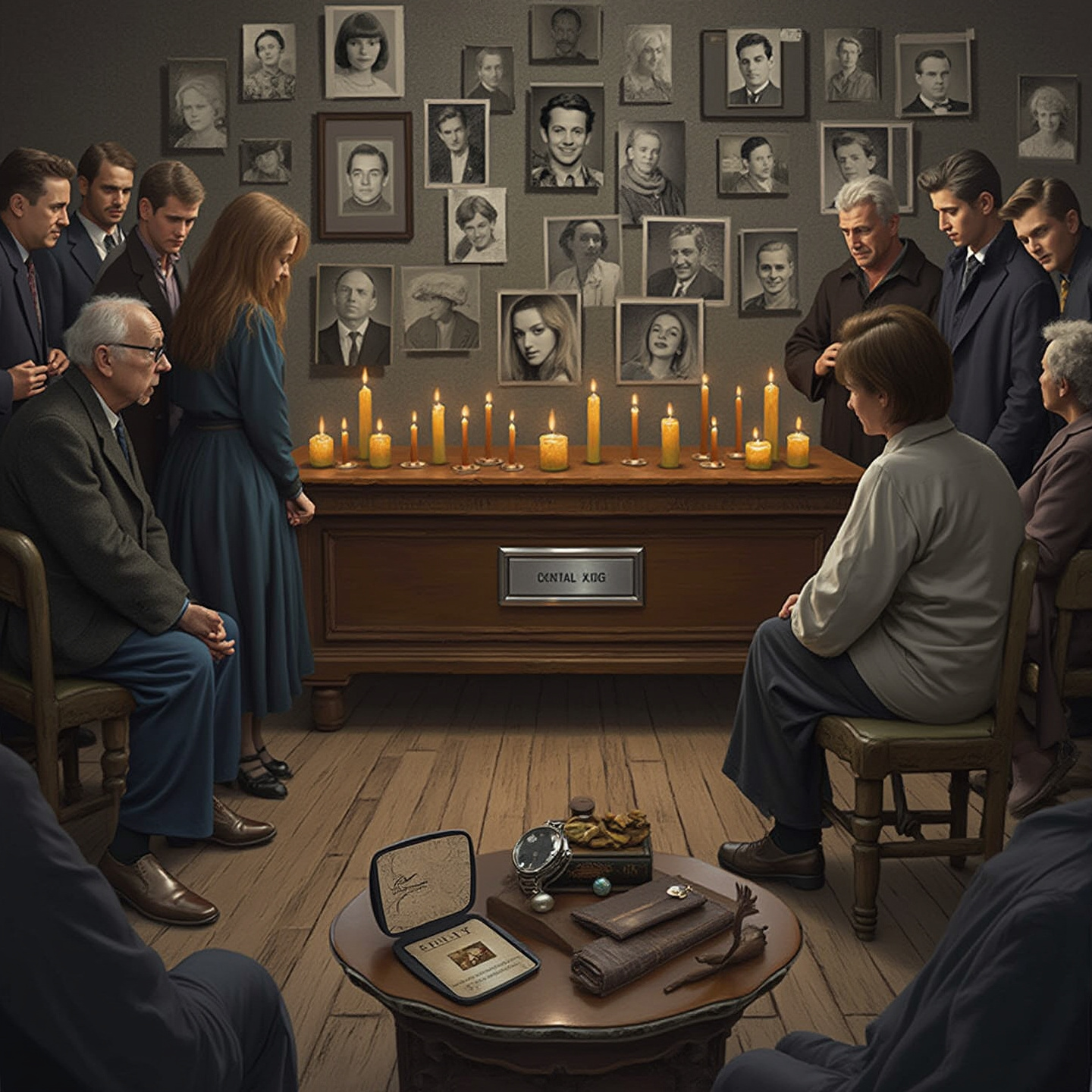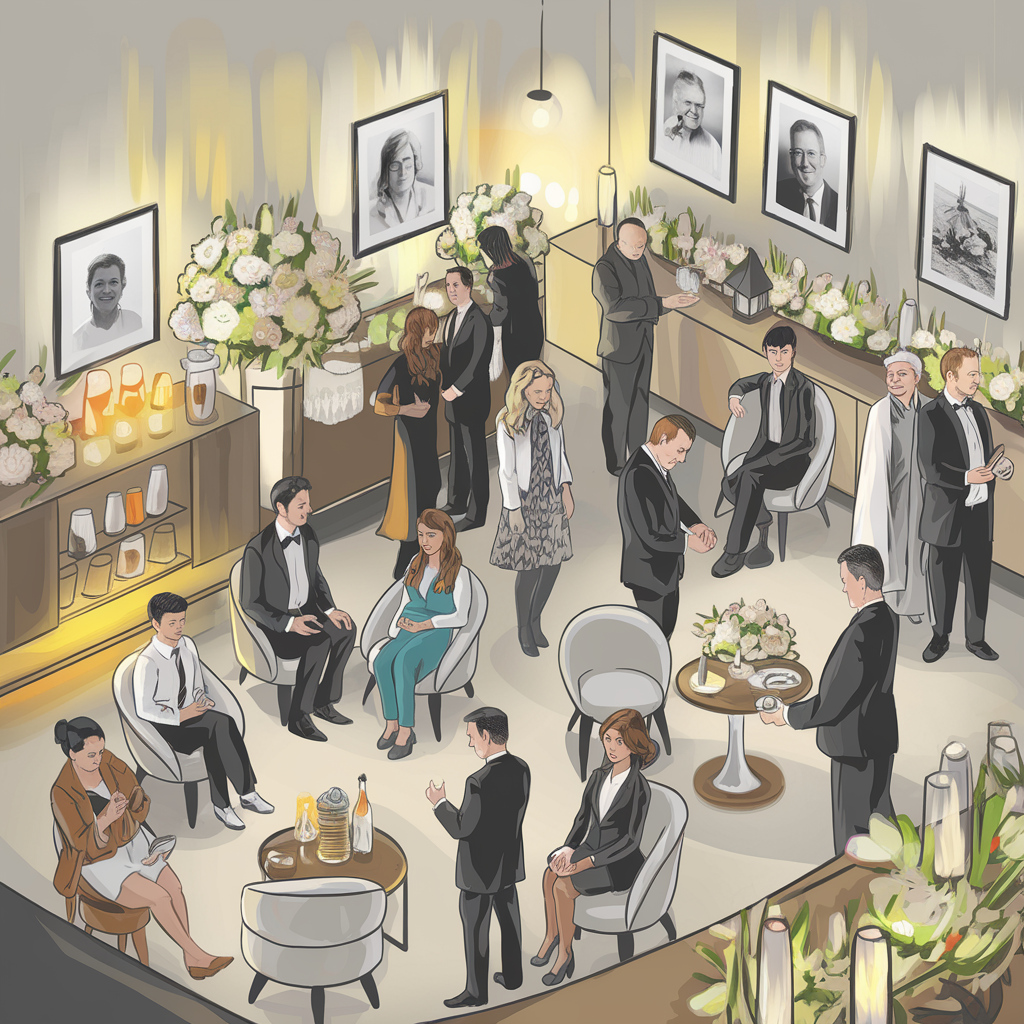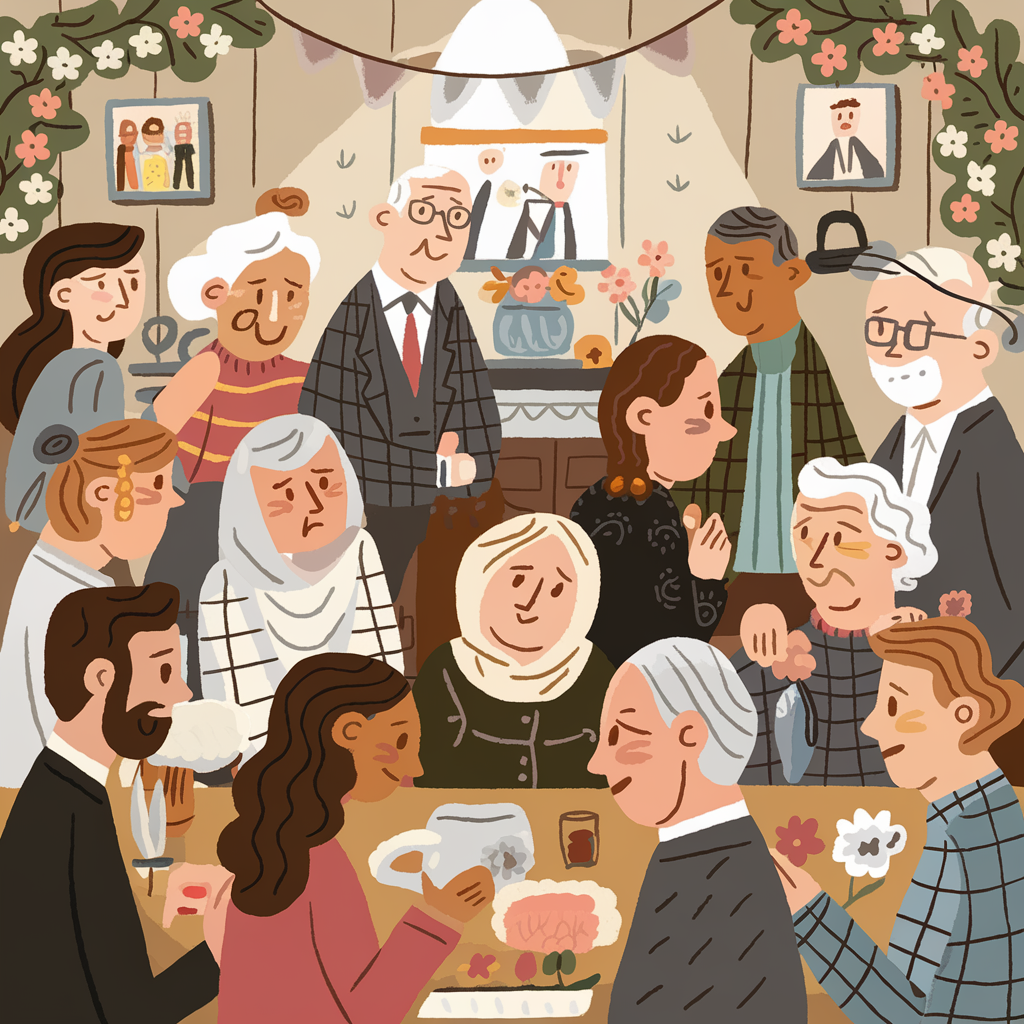Ever wondered what is a wake funeral and why it feels different from regular services? Think of it as the ultimate family gathering – but with a deeper purpose.
Picture this: stories being shared over coffee, tears mixed with occasional laughter, and people coming together to remember someone special. That's the essence of a wake funeral. It's less about the stiff formality you might expect and more about creating a space where everyone can process their grief together.
Unlike your typical funeral service, a wake funeral gives people more time and space to really be present with each other. It's an old tradition that's gotten a modern makeover, keeping the meaningful parts while ditching some of the heavy formality.

Historical Background
Ever wondered why it's called a "wake" funeral? The name actually comes from an old English word meaning "watch" or "guard." Back in the day, families would literally stay awake all night with their loved one – yeah, you read that right – keeping a 24-hour vigil right up until the burial.
The tradition has some fascinating roots, especially in Irish culture. Picture this: centuries ago, Irish families would transform their homes into gathering spaces, where neighbors would drop by at any hour to pay respects. They'd share stories, sometimes even crack jokes, and yes – there might have been a drink or two involved. It wasn't considered disrespectful; it was their way of celebrating life while acknowledging death.
What's really cool is how different cultures put their own spin on what is a wake funeral. While the Irish were known for their lively wakes, other traditions, like the Scottish keening (a kind of emotional singing lament), brought different vibes to the practice.
Fast forward to today, and while we might not stay up all night anymore, the core idea remains the same – creating a space for community support and remembrance. Some modern families even blend traditional elements with new customs, like the Caribbean nine-night tradition, showing how flexible these gatherings can be.

The Modern Wake Funeral Experience
So, what is a wake funeral like these days? Let's break down what you can expect – it's way more flexible than you might think.
The Setup
Think of it as an open-house style gathering. Usually held at a funeral home (though some families still rock the traditional home setting), you'll find the room arranged with the casket or urn as a focal point, surrounded by flowers and often photo displays or digital slideshows of happy memories.
Timing and Flow
Modern wakes typically run for a few hours, often the day before the funeral. Some families keep it traditional with multiple days of visitation, while others opt for a single evening. There's no one-size-fits-all – some cultures, like Filipino traditions, might extend the wake for several days to accommodate far-traveling relatives.
What Actually Happens
- People drop in and out at their convenience
- Family members usually stay throughout to greet visitors
- Conversations happen naturally – sometimes quiet, sometimes lively
- Light refreshments are often served
- Stories and memories are shared freely
Modern Twists
Today's wake funeral might include:
- Video tributes playing on screens
- Memory books for guests to sign
- Photo sharing through apps
- Live-streaming for distant relatives
- Social media memorial pages
The big difference between a wake and other funeral events? It's more relaxed. You don't have to whisper, you can stay as long (or short) as feels right, and it's okay to laugh when sharing funny memories. Think of it as a gathering where being real about your feelings – all of them – is totally welcome.

Emotional and Social Benefits
Understanding what is a wake funeral helps us see why it's such a powerful healing tool. Let's dive into the real benefits that make these gatherings so important.
The Power of Shared Grief
Think about trying to carry a heavy box alone versus with friends – that's what grief feels like at a wake. Research shows that larger gatherings actually help reduce the emotional burden on the family. When people come together, they literally share the weight of loss.
It's Like Emotional First Aid
- You get to process grief in real-time
- There's no pressure to "keep it together"
- Stories and memories flow naturally
- Tears and laughter are equally welcome
The Community Support System
Here's something cool: wakes create this invisible support network. When people gather, they don't just offer condolences – they often step up with practical help too. Maybe someone brings food, another offers childcare, and suddenly, the family isn't facing everything alone.
The Healing Timeline
Unlike a quick funeral service, a wake funeral gives everyone breathing room. You can:
- Take breaks when emotions get intense
- Return for multiple visits if needed
- Process feelings at your own pace
- Connect with others who understand your specific memories
The Long-Term Impact
Research shows that these gatherings do more than just help in the moment. They create lasting connections and support systems that stick around long after the wake ends. Plus, they give people permission to talk about their loved one openly – something that's super important for long-term healing.
Think of it this way: a wake isn't just about saying goodbye. It's about creating a space where healing can begin, surrounded by people who get it.
Planning Considerations
So, you're figuring out what is a wake funeral and how to plan one? Let's break down the key stuff you need to think about – no fancy jargon, just straight talk.
Location Options (Pick What Fits)
- Funeral Homes: Most popular choice, they've got everything set up
- Religious Venues: Great for traditional religious wakes
- Your Home: Yes, it's still an option for a more intimate feel
- Community Centers: Work well for larger gatherings
Timing Tips
Quick heads up: Most wakes happen 2-3 days after passing. But here's the deal:
- Afternoon/evening hours usually work best for most guests
- Plan for 3-4 hours minimum
- Consider your community's work schedules
- Factor in travel time for out-of-town family
Budget Reality Check
Let's be upfront about costs – it's important to plan ahead. While the average wake and funeral service together typically costs around $9,000, there are several ways to manage these expenses. Here are some helpful options to consider:
- Funeral home package deals
- DIY elements where possible
- Sharing costs among family
- Pre-planning options to lock in prices
Pro Planning Tips
- Book the venue ASAP
- Set up a photo display (digital or physical)
- Plan simple refreshments
- Have a guest book ready
- Consider parking situation
- Think about seating arrangements
Cultural Considerations
Here's something often missed: If you're planning to include specific cultural or religious elements, chat with your venue first. Some places are more flexible than others about things like food, music, or ceremonial practices.
Remember: There's no "perfect" way to plan a wake funeral. The best plan is one that feels right for your family and honors your loved one.
Modern Adaptations and Trends
What is a wake funeral looking like in 2024? It's getting a major tech upgrade while keeping its heart intact.
Digital Integration
Live-streaming is now standard at many wakes, letting far-away family join in. Some families are even using QR codes on memorial programs, linking to online tribute pages where people can share memories 24/7.
Eco-Friendly Shifts
Green wakes are trending big time. Think biodegradable decorations, digital photo displays instead of printed ones, and even plant-based refreshments. It's all about honoring both the person and the planet.
Hybrid Experiences
The biggest game-changer? Hybrid wakes. People can now pop in virtually or in person, making it way more accessible for everyone. Some families even keep virtual memorial spaces open long after the physical wake ends.
Personalization Plus
Gone are the one-size-fits-all wakes. Now we're seeing themed celebrations, memory stations, and interactive tributes that really capture who the person was.
Etiquette and Guidelines
Now that you know what is a wake funeral, here's your no-stress guide to doing it right. Don't sweat it – these are more like friendly tips than strict rules.
The Basics
- Drop in anytime during posted hours
- Stay as long as feels right (15 minutes to an hour is typical)
- Sign the guest book – it means a lot to families
- Put your phone on silent (seriously)
What to Wear
Keep it simple:
- Business casual usually works
- Dark colors are safe but not mandatory
- Skip the super casual stuff (no gym clothes)
- Home wakes are a bit more relaxed with dress codes
The Don'ts
- Skip the selfies (not the time or place)
- Avoid bringing up old drama
- Don't monopolize the family's time
- Let others have their turn to pay respects
Pro tip: When in doubt, just follow the family's lead. Every wake has its own vibe, and that's totally okay.
Conclusion
Understanding what is a wake funeral helps you see why these gatherings matter so much. Whether you're planning one or attending one, it's about creating space for real connection during tough times.
At Overnight Caskets, we've seen how these traditions bring comfort to families. While we provide the practical elements – like quality caskets delivered right when you need them – we know it's the moments shared during the wake that truly matter.
Looking ahead, wakes will keep evolving, blending time-honored traditions with modern touches. But their core purpose stays the same: bringing people together to remember, share, and begin healing.

